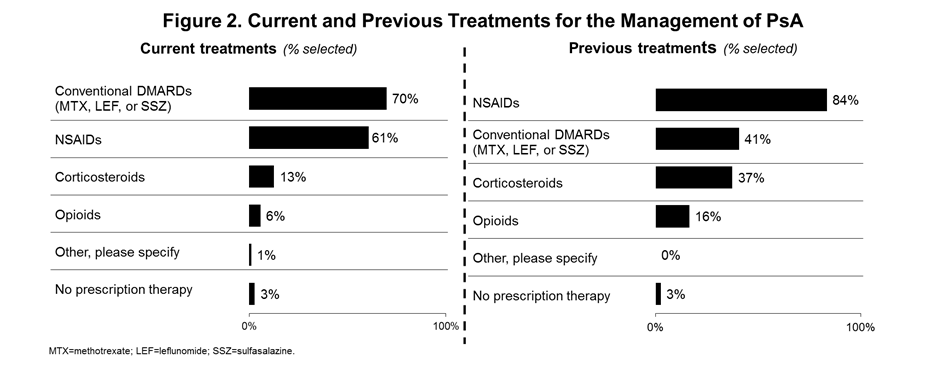Session Information
Session Type: Poster Session (Tuesday)
Session Time: 9:00AM-11:00AM
Background/Purpose: Oligoarticular disease in patients with psoriatic arthritis (PsA) is often underdiagnosed and undertreated. The goal of this study is to understand and identify current practices and unmet needs in the treatment of patients with oligoarticular PsA in Canada.
Methods: Twenty-one rheumatologists took part in a 25-minute online survey, conducted in English and French, between December 2018 and January 2019 from multiple locations across Canada. The participating rheumatologists were required to have diagnosed at least 1 patient with PsA currently presenting with 1 to 4 active joints. In addition, the participants were required to review charts of patients with oligoarticular PsA who were at least 18 years of age and had never been treated with apremilast, tofacitinib, or biologics.
Results: Data from the clinical practices of the participating rheumatologists over the 4 weeks before the survey indicated that >50% of patients with PsA presented with oligoarticular disease. A review of 97 charts of patients with oligoarticular PsA revealed that most (66%) were of working age (25-64 years), had a mean disease diagnosis of 5 years, and presented with 3 active joints on average, the majority of which were swollen. The most frequently mentioned presentation of active joints in patients with oligoarticular PsA was small joints of the hand (38%), knee (20%), and wrist (17%) (Figure 1). Patients presented with other manifestations of the disease, particularly skin disease (79%), nail disease (35%), dactylitis (32%), and enthesitis (29%). With respect to treatment, 70% of patients were currently being treated with conventional DMARDs; despite this, non-steroidal anti-inflammatory drugs (NSAIDs), corticosteroids, and opioids continued to be utilized (Figure 2). Only 29% of physicians reported being extremely satisfied with their patients’ current therapy in terms of overall disease management and were least satisfied with the management of their patients’ enthesitis (only 14% extremely satisfied). Participating rheumatologists indicated a preference for switching therapies in 79% of the patients; however, 57% of the participants cited not doing so because of patient hesitation.
Conclusion: Patients with oligoarticular PsA present with manifestations across all disease domains. Despite commonly held beliefs that oligoarthritis predominantly affects large joints, our data suggest that smaller joints, including those of the hand and wrist, are important manifestations of the condition. Patients are not adequately controlled by conventional DMARDs, and physician satisfaction with current therapies remains low.
To cite this abstract in AMA style:
Cividino A, Nicholson D, Guindi S, Jelley J, Gaudreau A, Gladman D. Clinical Presentation and Treatment of Oligoarticular Psoriatic Arthritis in Canada: High Frequency of Smaller Joint Involvement [abstract]. Arthritis Rheumatol. 2019; 71 (suppl 10). https://acrabstracts.org/abstract/clinical-presentation-and-treatment-of-oligoarticular-psoriatic-arthritis-in-canada-high-frequency-of-smaller-joint-involvement/. Accessed .« Back to 2019 ACR/ARP Annual Meeting
ACR Meeting Abstracts - https://acrabstracts.org/abstract/clinical-presentation-and-treatment-of-oligoarticular-psoriatic-arthritis-in-canada-high-frequency-of-smaller-joint-involvement/


